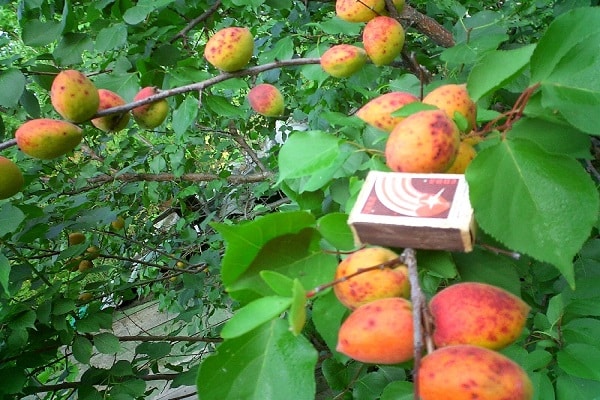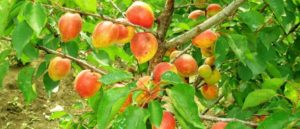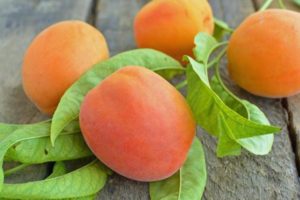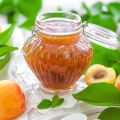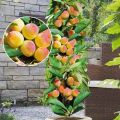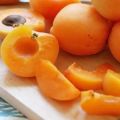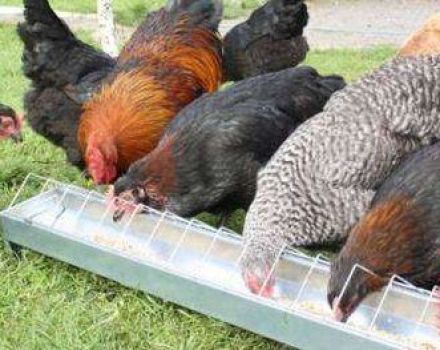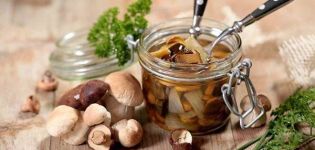Description of the Ulyanikhinsky apricot variety, yield characteristics and cultivation
Gardeners are happy with Ulyanikhinsky apricot. The plant does not require special care, it is resistant to major diseases and pests. And you can enjoy delicious fruits every year. Moreover, the harvest allows the whole family to eat their fill and roll up the vitamin preserves.
History of origin
The Russian gardener Ivan Michurin managed to obtain varieties of apricots improved in their characteristics. His work was continued by scientific institutions and amateur gardeners. One of them - L. M. Ulyaninikhin - created a variety named after him.
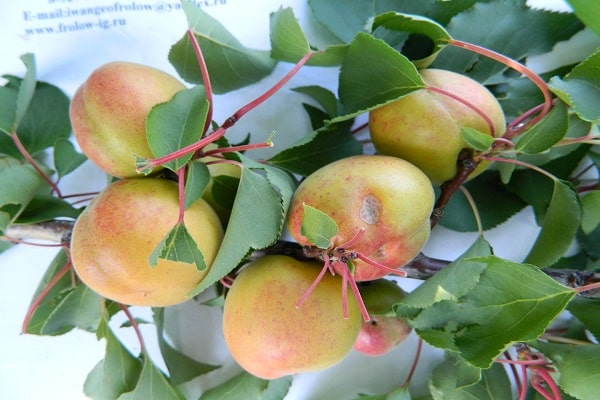
Apricot Ulyanikhinsky was obtained by crossing the varieties Comrade (author Michurin), Satser and Krasnoshchekiy. The result was appreciated: in 2004 Ulyanikhinsky was included in the State Register of Cultivated Plants in the Central Black Earth District.
Today the variety is often found in gardens. Its main value: you can start eating apricots in the third year after planting the tree. With proper care, fruiting is regular.

Description of the variety
The apricot attracts gardeners. The reason for this is its varietal characteristics. Description of the variety:
- spreading crown (up to 3 m in diameter);
- height 3.5 m;
- average foliage;
- medium branching;
- bark color is brownish red;
- the arrangement of the shoots is vertical;
- internodes are short;
- cone-shaped buds, lagging behind the shoots;
- the leaf is rounded, the tip is sharp, the edge is serrate;
- the stipules are weakly dissected;
- flowers are white;
- early ripening variety (ripens at the end of July);
- self-fertile apricot (ovaries are formed without the presence of pollinating plants).
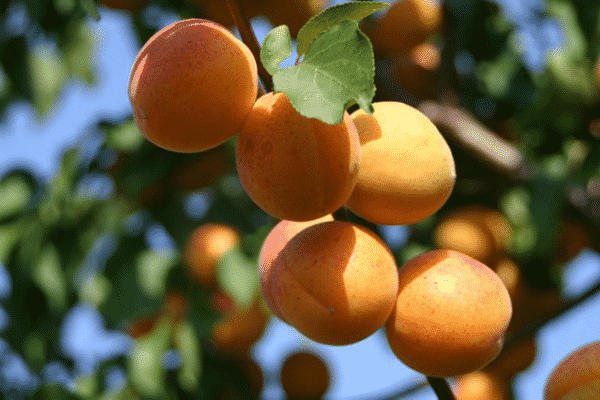
Distinctive feature: Ulyanikhinsky blooms before the leaves open. Agronomists recommend planting 1-2 year old seedlings. Young trees take root better and begin to bear fruit faster.
Characteristics of apricots:
- maximum fruit weight 33 g;
- the shape of the apricot is oval-round;
- the skin is thin but strong;
- the apricot is bright yellow with a pronounced blush;
- the pulp is juicy, yellow;
- the mass of the bone is 3% of the total mass;
- the bone of a ripe fruit is easily separated;
- the taste is excellent - sweet and sour.
Gardeners consider the lack of the Ulyanikhinsky fruit shedding. Ripe apricots do not stick well to the branches. But collected on time are perfectly stored for 2-3 weeks in a cool place.

Growing features
Ulyanikhinsky pleases summer residents with a stable harvest with minimal care. But you still need to follow the basic rules.
Dates and place
For a comfortable existence, an apricot needs to allocate a special place on the site.It must be sheltered from cold northerly, northeasterly and easterly winds. These air currents dry out fruit and growth buds. The gardener does not receive a crop.
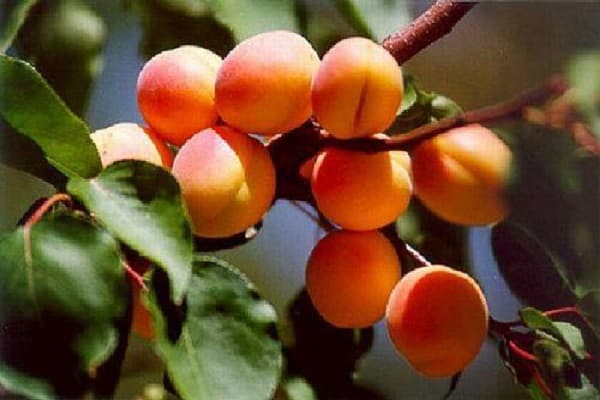
Ulyanikhinsky feels good when placing summer cottages on the south side. But when planting, you should take into account the spreading and height of the tree. It is recommended to retreat from the wall 3-4 meters.
It is recommended to plant an annual seedling in early spring (before bud break) or late autumn (3-4 weeks before a steady cold snap). The tree must have time to take root: this will help it survive the harsh time.
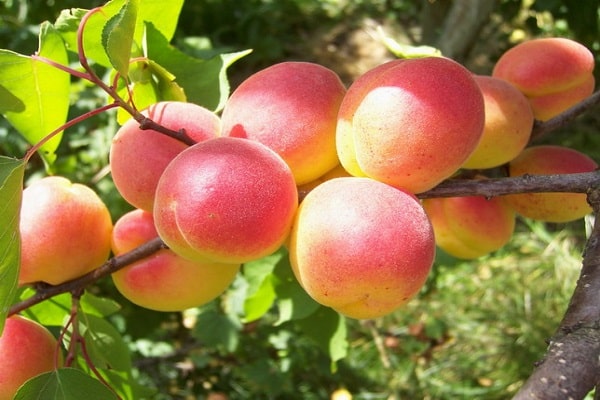
Site preparation
The Ulyanikhinsky soil requires loose, fertile soil with a neutral or slightly alkaline reaction. On acidic soils, liming is recommended before planting. Heavy clay soils should be sanding (a bucket of coarse sand per 1 square meter should be brought in for digging).
It is required to prepare a landing pit in advance. Its size: 70 cm x 70 cm x 70 cm. The pit should be filled with mature organic matter and a mineral complex mixed with soil. It is recommended to prepare the pit in the spring with the planned autumn planting and in the fall - with the spring.
An annual seedling is planted in the hole. It should freely accommodate the apricot root system. If it is impossible to immediately place a tree in a permanent place, you need to dig it in... In this state, the apricot can spend the season without losses.

Pollinators
Ulyanikhinsky is a self-fertile variety. It does not require pollinating trees for stable fruiting. But to increase the yield, it is recommended to place 2-3 apricots on the site, blooming at the same time with it. Red-cheeked, Michurinsky Best will do.
Care
Young seedlings require competent care. 1-2 year old trees are especially vulnerable. Mature trees need regular pruning, watering, feeding, and pest control.

Preparing for winter
Winter preparations should be started early. Young seedlings are recommended to be tied with sacking to prevent damage from hares and frostbites.
For trees of any age, water-charging watering is required. This measure will help the apricot survive the cold season. It is necessary to clear the near-trunk circle of weeds and fill it with needles. Small rodents will not nest in prickly areas.
In winter, after snowstorms, snow should be trampled around the trunk over the entire area of the trunk circle. This destroys rodent burrows and protects the trunk. The thick snow cover prevents the onset of sap flow during thaws.
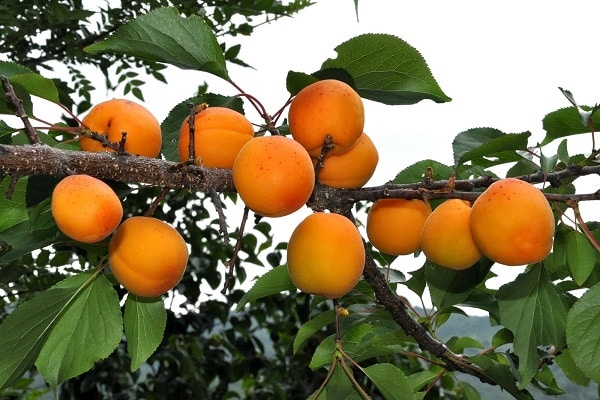
Pruning
Ulyanikhinsky is prone to overgrowth. But the thickened crown will not allow insects to pollinate the flowers evenly. And ripening fruits require sunlight. Therefore, pruning should be done regularly.
The optimal time is early spring or late autumn. Sap flow stopped at this time. The tree will survive the operation painlessly. Pruning rules:
- the crown should be transparent;
- all dried and damaged (during snowfall or wind) shoots are removed;
- growing at an acute angle or crossing branches are cut;
- cuts are made “on the ring” (to avoid rot);
- wounds larger than 1.5 cm are covered with garden varnish or oil paint (to protect against bacteria and fungi).
For trimming, a disinfected (with alcohol or potassium permanganate) and well-sharpened tool is used.

Tree feeding
When planting in a filled planting hole, the first 3 years of feeding are not done: the tree has enough food. And then mineral complexes should be added twice a year: in spring and autumn. Organic wood is given in early spring (immediately after the snow melts): a bucket of mature compost per 1 square meter.
Harvesting and storage
Ulyanikhinki is prone to fruit shedding. They should not be overexposed on a tree. The apricots are harvested in the last weeks of July. It is recommended to use a fruit picker for convenience. So apricots are less damaged and stored longer.
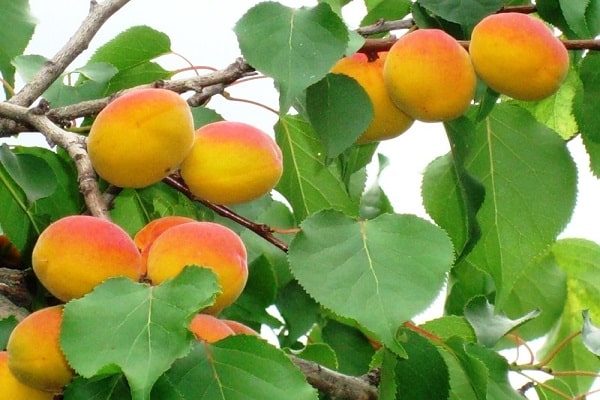
The collected fruits must be sorted. Put the strong ones in boxes or baskets with a layer of 5-7 cm and lower them into a ventilated cellar. There apricots will be perfectly preserved within 3 weeks. Soft and wrinkled must be processed immediately.
Advantages and disadvantages of the variety
Gardeners note the positive qualities of Ulyanikhinsky:
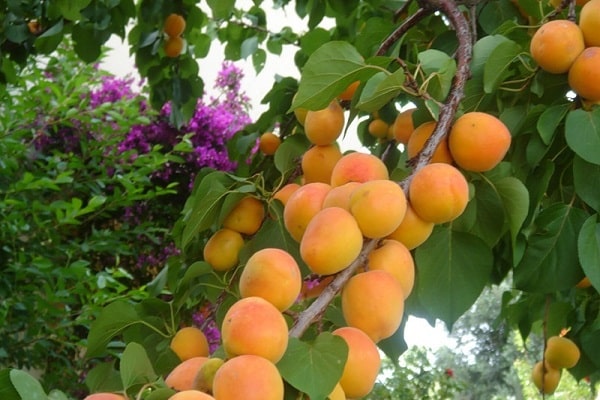
- regular fruiting;
- self-fertility;
- winter hardiness;
- excellent transportability;
- delicate taste of fruits;
- universal purpose of apricots;
- resistance to diseases and pests.
But the variety also has disadvantages:
- tendency to shedding fruits;
- increased overgrowth formation;
- crushing of fruits in case of violation of the rules of care;
- sensitivity to waterlogging.
Competent gardeners easily deal with shortcomings.
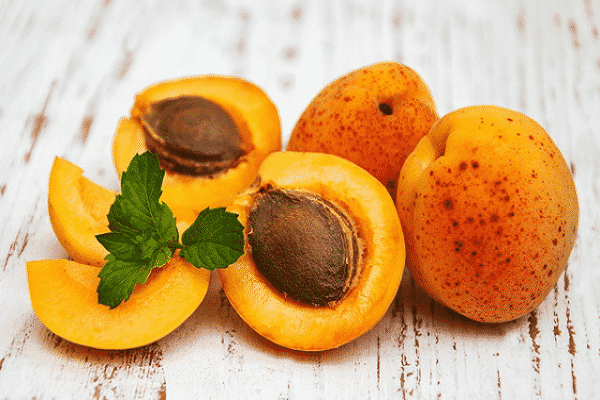
Diseases and pests
Ulyanikhinsky has good immunity to major diseases and pests. But this requires proper care of the tree. If the recommendations are violated, the apricot is affected by the moth, leaf roll and aphids.
At the first signs of damage, it is recommended to carry out treatment with insecticides (according to the instructions). To effectively control aphids, you need to remove the garden ants. This procedure takes place in March-April.
